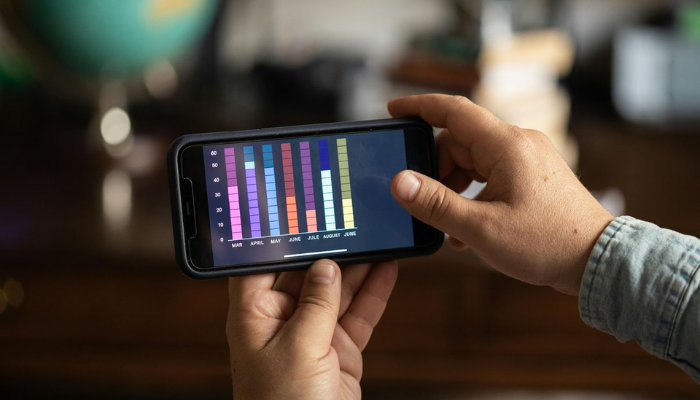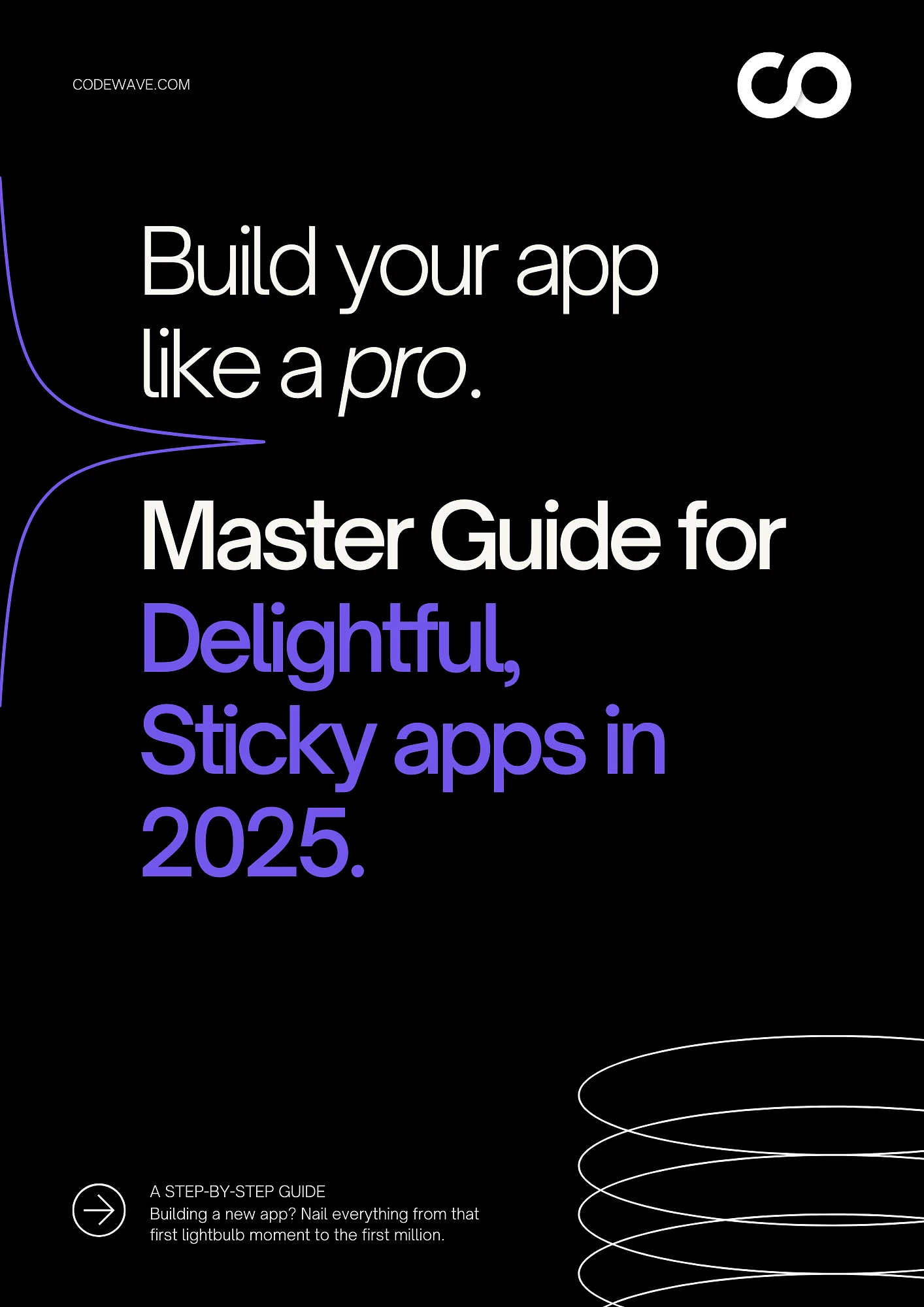Building a successful mobile app is a major step for any business, especially in Australia’s thriving $167 billion digital economy. However, many businesses struggle with finding the right technical partner to bring their app idea to life.
The risks are real. Choosing the wrong Flutter development partner can lead to one of the 64% of failed app projects that are attributed to poor partner selection. These projects often go over budget, miss deadlines, or, worst of all, never make it to market.
On the flip side, the right partner can cut your development costs in half and deliver an app that works flawlessly on both iOS and Android. The key to success lies in knowing how to select the right development team and asking the right questions before you sign on the dotted line.
This checklist will walk you through the process of finding a Flutter development partner who can help you avoid costly mistakes and turn your app vision into reality.
Understanding Flutter App Development Market in Australia
Flutter is the smart solution to the biggest challenge in app development. Instead of building separate apps for iPhone and Android, which means more work, higher costs, and more headaches, Flutter lets you create one app that works seamlessly on both platforms.
Here’s what makes Flutter special for businesses:
- Speed That Matters Flutter apps perform just as fast as native apps. Your customers won’t notice any difference, but your development timeline will be cut in half. While your competitors are still building their iOS version, you’re already in the market, capturing customers.
- Cost-Effective Development Australian businesses save 40-60% on development costs with Flutter compared to building separate native apps. That’s money you can invest in marketing, features, or scaling your business instead of duplicating development work.
- One Team, Two Platforms No need to hire separate iOS and Android developers. One skilled Flutter team can handle everything, making project management simpler and communication clearer.
- Future-Ready Technology Google backs Flutter with serious investment and continuous updates. You’re not betting on a technology that might disappear, you’re choosing the same framework used by companies like Alibaba, BMW, and Toyota.
Why Australian Companies Are Making the Switch
Flutter adoption in Australia has grown in the past two years. Local businesses are discovering they can launch apps faster, update them more easily, and maintain them with smaller teams.
However, Flutter’s potential means nothing without the right team behind it. Poor partner selection is costing Australian businesses millions every year. Projects run over budget, launch dates slip by months, and some apps never make it to market at all.
The good news? You can avoid these costly mistakes. In the following sections, we’ll walk you through the exact factors successful companies consider when choosing their Flutter development partners.
You’ll discover the questions that separate excellent partners from expensive disasters, and get a proven framework for making the right choice every time.
Key Factors to Consider When Choosing a Flutter Development Partner
Choosing the right Flutter development partner is more than just a price comparison or a flashy portfolio. The right partner will align with your business goals, understand the technical and regulatory environment, and deliver results that drive growth. Here’s what to focus on when making your decision:
1. Technical Expertise Beyond Flutter
While deep expertise in Flutter is essential, it’s crucial that your partner has a broad understanding of the entire app ecosystem. Flutter simplifies cross-platform development, but creating a high-quality app still requires knowledge of backend integration, third-party APIs, app performance optimization, and deployment.
A partner who only knows Flutter but lacks a broader technical understanding can lead to costly delays and app performance issues.
Key Considerations:
- Does the team have experience in integrating backend technologies like Firebase, AWS, or custom APIs?
- How do they approach app performance optimization to ensure smooth user experiences?
- Are they skilled in app store optimization to enhance discoverability and downloads?
Red Flags: Avoid teams that focus solely on Flutter development and cannot demonstrate expertise in other critical areas of app development.
2. Understanding of the Australian Market and Compliance
For Australian businesses, understanding local regulations and user preferences is key. Your Flutter development partner should be familiar with the Australian Privacy Act, local consumer laws, and the unique behavior of Australian app users. This knowledge is not only vital for legal compliance but also for ensuring the app resonates with your target audience.
Key Considerations:
- Are they familiar with Australian Privacy Law and the requirements for data protection within the app?
- Do they understand local payment gateways, such as BPAY or Australian-based banking systems?
- How do they handle the submission process for Australian app stores, particularly when it comes to regional content regulations?
Questions to Ask:
- Have you previously developed apps for Australian clients, and can you provide relevant case studies?
- How do you ensure the apps you develop comply with Australian laws?
3. Clear Development Process and Transparent Communication
A well-defined development process is vital to ensure the project stays on track and within budget. Look for a partner that clearly outlines every stage of development, from initial planning to post-launch support, and maintains transparency throughout the process. Your partner should also be open to discussing potential roadblocks early and offering proactive solutions.
Key Considerations:
- Regular progress updates and clear milestones
- Transparent communication about project timelines, costs, and any delays
- Clear testing and quality assurance protocols before launch
Red Flags: Avoid partners who cannot explain their process clearly, lack transparency, or fail to provide regular updates. These can lead to misunderstandings and project delays.
4. Quality of Portfolio and Relevant Experience
It’s essential to review the complexity of the projects your potential partner has handled. Look beyond the aesthetics of the apps; focus on their ability to tackle complex features and deliver measurable results. A strong portfolio will reflect a range of successful apps with diverse features, performance metrics, and user feedback.
Key Considerations:
- Do the apps they’ve built meet your technical requirements?
- How successful are the apps in terms of user engagement and business outcomes?
- Are there detailed case studies showing how their apps solved business problems or achieved specific goals?
Due Diligence:
- Download and test the apps yourself to assess their performance.
- Look at user reviews and ratings to gauge satisfaction.
- Reach out to previous clients for feedback on their experience with the developer.
5. Communication Style and Cultural Fit
Effective communication is a cornerstone of a successful partnership. A good Flutter development team will make an effort to understand your business needs and communicate technical concepts in simple, clear terms. They should be proactive in addressing concerns, offering suggestions, and keeping you informed throughout the project lifecycle.
Key Considerations:
- How quickly do they respond to emails or inquiries?
- Are they able to explain technical issues in a way that aligns with your business objectives?
- Do they show genuine interest in understanding your project and solving your specific problems?
Red Flags:
- Poor or slow communication, especially during early discussions.
- Pushy sales tactics or an unwillingness to address potential project challenges.
- Focusing on their preferred solutions rather than tailoring to your needs.
Create Scalable, User-Friendly Flutter Apps with Our Dedicated Team.
The next step is understanding the challenges you might face when choosing the right Flutter development partner. Let’s explore the common obstacles that can arise and how to address them to ensure you select the best team for your business.
Common Challenges Businesses Face When Choosing Flutter Partners
Even with the right factors in mind, you can still encounter specific challenges when selecting Flutter development partners. Understanding these obstacles helps you prepare better and make smarter decisions.
Challenge 1: Limited Local Flutter Expertise
Australia’s Flutter talent pool is still growing. Many local developers are just transitioning from other technologies, which means truly experienced Flutter specialists are hard to find. This scarcity drives up costs and makes it tempting to settle for less experienced teams.
The Impact: Projects take longer, require more revisions, and often need expensive fixes later.
Solution: Look for partners who have a proven track record with Flutter, even if they are not locally based. Some offshore teams may have more mature expertise. Ensure the team has a solid portfolio, with case studies that demonstrate their ability to handle complex Flutter projects. Additionally, consider teams that are committed to continuous learning and have up-to-date skills in the latest Flutter versions.
Challenge 2: Time Zone Complications with International Partners
Working with offshore development teams seems cost-effective until you face the reality of communication delays. When your development team is asleep during your business hours, simple questions turn into day-long delays.
The Reality: A quick clarification that should take 10 minutes can stretch project timelines by days when you’re waiting for responses across time zones.
Solution: To mitigate this, select partners that offer overlapping working hours or have flexible working arrangements. Establish clear communication protocols, such as scheduled daily or weekly check-ins to ensure consistent progress. Use project management tools like Trello, Jira, or Slack to keep tasks aligned and ensure that feedback loops are streamlined even with time zone differences.
Challenge 3: Understanding Australian Business Requirements
Many development partners, especially international ones, don’t grasp the specifics of Australian business operations. They might not understand ACCC guidelines, local consumer expectations, or the importance of integrating with Australian payment systems and banking APIs.
The Cost: Apps that don’t meet local compliance requirements or user expectations, leading to poor adoption and potential legal issues.
Solution: Choose a partner that has experience working with Australian clients or, at the very least, one who understands Australian regulations. Ask about their knowledge of local laws such as the Privacy Act, ACCC guidelines, and how they approach integrating Australian payment systems.
A partner who is willing to invest time in understanding these specifics will deliver an app that aligns with local standards and user expectations.
Challenge 4: Hidden Costs and Scope Creep
The initial quote looks reasonable, but then comes the reality of additional charges for features you thought were included. Many partners underestimate project complexity or intentionally lowball initial estimates to win contracts.
The Surprise: Projects that start at $50,000 suddenly cost $120,000, and you’re too invested to walk away.
Solution: Ensure the development partner provides a clear, detailed project scope and timeline, with transparent breakdowns of costs. Use a fixed-price model or establish a clear change management process for any additional features or adjustments.
It’s important to have a well-defined contract that outlines all potential costs and ensures transparency at each stage of development.
Challenge 5: Post-Launch Support Uncertainty
Your app launches successfully, but then what? Many development partners treat app launch as the finish line, leaving you scrambling when you need updates, bug fixes, or new features.
The Problem: You’re stuck maintaining an app built by someone else, often with limited documentation or support options.
Solution: Before signing the contract, discuss post-launch support in detail. A good partner should offer a post-launch maintenance plan that includes bug fixes, performance optimizations, and updates.
Ask about response times, the availability of support teams, and any costs associated with post-launch work. Be sure to have clear documentation and source code handover, so you’re not left dependent on the development team for future changes.
The good news is that these challenges are predictable and manageable when you know what questions to ask and what warning signs to watch for.
We Combine Advanced Technical Expertise with a Proven Development Process Using Tools Like Flutter Inspector, Jira, and Trello to Deliver High-Quality Apps.
Contact Us Today to Get Started!
In the next section, we’ll give you the exact questions that you can use to identify reliable Flutter development partners and avoid these common pitfalls.
Essential Questions to Ask Potential Flutter Development Partners
The difference between a successful partnership and a costly disaster often comes down to asking the right questions upfront. These aren’t just conversation starters, they’re your tools for uncovering potential problems before they become expensive mistakes.
Technical Capability Questions
- Can you walk me through your most complex Flutter project? Listen for specific details about challenges they overcame and solutions they implemented. Vague answers or inability to explain technical decisions clearly are red flags.
- How do you handle app performance optimization? Good partners should mention specific tools like Flutter Inspector, performance profiling, and concrete strategies for maintaining smooth app performance across different devices.
- What’s your experience with Flutter’s latest features and updates? Flutter evolves rapidly. Partners who aren’t staying current with framework updates may leave your app using outdated approaches or missing optimization opportunities.
- How do you ensure our app works consistently across different Android and iOS versions? This reveals their testing processes and understanding of cross-platform compatibility challenges.
Project Management and Communication Questions
- How will we communicate throughout the project, and how often? Expect clear communication schedules, defined meeting frequencies, and specific contact points. Daily updates for active development phases should be standard.
- What project management tools will we use, and what visibility will I have? Professional partners use tools like Jira, Trello, or Asana, and give clients real-time access to project progress, not just weekly email updates.
- How do you handle changes to project scope or requirements? The answer should include a formal change request process, impact assessment procedures, and clear communication about timeline and cost implications.
- What happens if the project falls behind schedule? Look for partners who take responsibility and have concrete strategies for getting back on track, not just excuses.
Cost and Timeline Questions
- Can you provide a detailed breakdown of your pricing structure? Transparent partners itemize costs clearly. Be suspicious of vague estimates or partners who can’t explain what you’re paying for.
- What’s not included in this quote that we might need later? This question reveals hidden costs and helps you budget realistically. Honest partners will mention app store submission fees, third-party service costs, and ongoing maintenance needs.
- How do you handle cost overruns, and what’s your policy on budget management? Professional partners have processes to prevent cost overruns and clear policies for handling unexpected expenses.
- What’s a realistic timeline for our project, and what factors could affect it? Good partners provide realistic timelines with buffer time and clearly explain dependencies that could cause delays.
Support and Maintenance Questions
- What support do you provide after the app launches? Post-launch support varies widely. Get specific details about bug fix timeframes, update procedures, and ongoing maintenance options.
- How do you handle app store submissions and approval processes? This is more complex than it seems. Experienced partners manage the entire submission process and handle rejection scenarios professionally.
- What happens if we need new features or modifications after launch? Understand their process for handling future development work, including how they prioritize requests and structure ongoing relationships.
- Can you provide references from clients whose apps you still support? Current client relationships show their commitment to long-term partnerships, not just project completion.
Australian Market Specific Questions
- How do you ensure compliance with Australian privacy and consumer protection laws? They should demonstrate knowledge of the Privacy Act, Australian Consumer Law, and how these affect app development and data handling.
- What’s your experience with Australian payment systems and banking integrations? Local payment gateway integration (like PayPal Australia, Stripe Australia, or bank-specific APIs) requires specific experience.
- Can you provide examples of apps you’ve built for Australian businesses in our industry? Industry-specific experience in the Australian market shows they understand local customer expectations and regulatory requirements.
The Questions That Reveal Character
- What would you do differently if you were starting our project over again? This reveals their learning mindset and willingness to improve processes based on experience.
- What’s the biggest challenge you foresee with our project? Honest partners identify potential problems upfront rather than promising everything will be perfect.
- Why should we choose you over other Flutter development partners? Listen for specific value propositions rather than generic promises about quality or service.
Don’t settle for the first partner who gives good answers. Use these questions with multiple candidates to compare responses and find the best fit for your specific needs.
Good thing, you don’t have to navigate this complex selection process alone. Smart businesses are partnering with proven Flutter experts who already understand these challenges and have the track record to deliver results.
Why Choose Codewave as Your Flutter Development Partner
At Codewave, we’ve been helping Australian businesses transform their ideas into successful Flutter applications. We understand the unique challenges you face and have developed proven solutions that deliver real results.
Our Track Record Speaks for Itself:
With Codewave’s Flutter expertise, you’ll benefit from:
- 30% Reduced development cost compared to traditional native development
- 3X Faster time-to-market than competitors using separate development teams
- 400+ Applications built across diverse industries and markets
- 100% Quality assurance with comprehensive testing and optimization
What Makes Codewave Different for Australian Businesses?
We offer a comprehensive suite of flutter development services that ensure a seamless app development experience, tailored to meet the unique demands of the Australian market.
- Custom UI/UX Design That Converts We create visually stunning interfaces using Flutter’s widget library and Material Design principles. Your app won’t just look professional – it will represent your brand powerfully and drive user engagement from the first interaction.
- True Cross-Platform Excellence Our single Flutter codebase approach means your app works flawlessly on iOS, Android, web, and desktop. We use Dart programming language expertise to ensure code reusability, faster development, and consistent performance across all platforms.
- Performance That Keeps Users Engaged We optimize every app using Flutter’s Skia Graphics Engine and AOT compilation for lightning-fast performance. Your users experience smooth animations and responsive interactions that keep them coming back.
- Bulletproof Quality Assurance Our automated testing framework catches issues before they reach your users. We use advanced testing tools including unit testing, integration testing, and widget testing to ensure your app launches perfectly and stays reliable.
- Future-Ready Technology Integration We seamlessly integrate cutting-edge features like Augmented Reality, AI/ML capabilities, and real-time data processing. Your app stays competitive with features that engage users and drive business growth.
- Complete Backend Solutions Our GraphQL and Firebase integration expertise ensures your app handles complex data smoothly and scales as your business grows. From authentication to cloud storage, we build the infrastructure your success requires.
- Ongoing Partnership, Not Just Development We provide comprehensive post-launch support, regular updates, and feature enhancements. Your success is our success, which is why we maintain long-term relationships with our Australian clients.
Ready to Get Started?
Stop spending time evaluating dozens of development partners. Codewave has the proven Flutter expertise, Australian market understanding, and commitment to quality that your project deserves.
FAQs
1. Is Flutter in demand in 2025?
Yes, Flutter is in high demand in 2025 due to its ability to create cross-platform apps with a single codebase, offering fast and cost-effective development.
2. How much does it cost to develop a Flutter app in 2025?
The cost ranges from $15,000 to $100,000, depending on the app’s complexity, features, and integrations.
3. Is app development a good career in 2025?
Yes, app development is a strong career choice, with high demand for skilled developers, especially those proficient in Flutter.
4. What is the future of Flutter app development?
The future of Flutter looks promising, with ongoing improvements for multi-platform development, including desktop and web integration.
5. How to Choose the Right Software Development Partner for Your Business?
Look for expertise, a relevant portfolio, clear communication, and a partner who offers post-launch support while balancing cost and value.
Codewave is a UX first design thinking & digital transformation services company, designing & engineering innovative mobile apps, cloud, & edge solutions.







